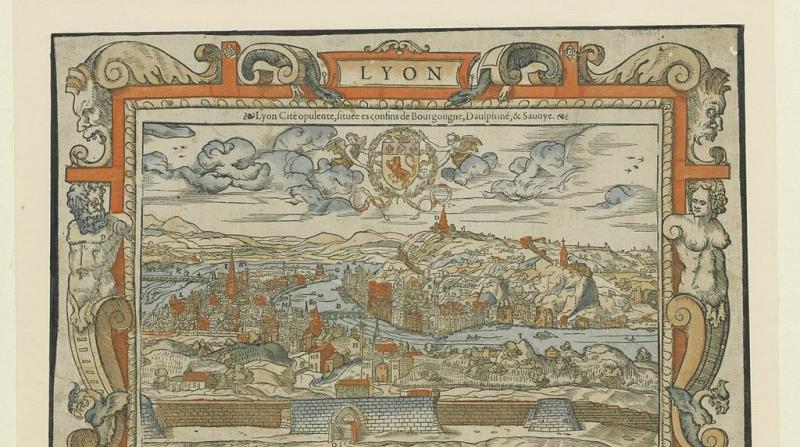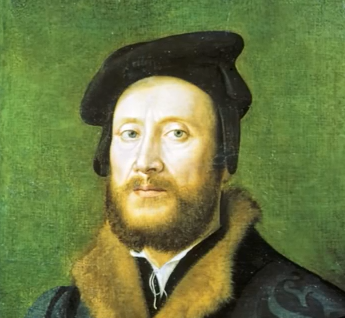Who is Jacques Moderne ?
Native of Pinguento (now Buzet in Croatia), a town in Istria that was part of the Republic of Venice, Jacques Moderne, also known as "grand Jacques," began his career as a printer in Lyon in the 1520s. He published nearly 150 works between 1523 and 1560, a third of which were musical editions. His workshop was located in Lyon, on Rue Mercière, near Notre-Dame de Confort, an area known for its printers. Jacques Moderne was an influential figure, far removed from the poverty of some of his colleagues. The study of his relationships, particularly his family connections, confirms this hypothesis. Thanks to his marriage to Michelette Durand, the daughter of a highly influential printer in the city, he officially became a citizen of Lyon, a status granted by the consulate after an oath of loyalty to the king and the city. Throughout his career, Jacques Moderne published books that Jean Duchamp describes as "popular." These were general works, non-musical in nature, divided into three categories: books for domestic or professional use, religious books, and literature. These editions, which were quick and sloppy, were produced purely for profit. This is how he was able to finance the publication of music books.
As early as 1530, Jacques Moderne became interested in music with his first editions of plainchant. Then, in 1532, after developing a system for printing music with movable type, he produced polyphonic editions: the Psaumes by Loyset Piéton. That same year, he published the Liber decem missarum and the two volumes of Motteti del fiore. These costly productions forced him to return to publishing popular works until 1538. That year, he produced the Parangon des chansons in four volumes and completed the anthology of motets he had started six years earlier. These two massive projects were not completed until 1543. When his main collaborator, the organist François Layolle, died in 1540, Jacques Moderne dedicated two books of Canzones to him and began a new anthology series: le difficile des chansons.
The political and economic context of the 1540s led to the decline of French editions in favor of Germany and Italy, whose rival publishers were outperforming Jacques Moderne. Furthermore, anthologies were no longer in fashion, which pushed Jacques Moderne to turn towards instrumental music. He published three books of lute tablature in Venice under the name Musica nova. This was in fact an adaptation of the ricercari book. He then published it in France, adding dances, under the name Musicque de joyes. What we would call plagiarism today was, in fact, common at the time, and Jacques Moderne, lacking inspiration or original works to publish, leveraged this practice. On the other hand, copies of music by the master of the papal court (Morales Missarium, Mariae Cantica) allowed him to establish himself in the Florentine circuits.
In the 16th century, music publishing faced technical challenges. It was difficult to combine different characters on a single page: notes, texts, and lines. As a result, editions were often imprecise. Ottaviano Petrucci was the first to use the technique of double printing to layoutSILE polyphonic compositions. Jacques Moderne's friend, Andrea Antico, invented the process of wood engraving for all the elements of the music scores. While this method seemed ingenious, it suffered from extreme slowness, and the cost of music books made them too luxurious for their trade to become profitable. Jacques Moderne, by inventing movable type, became an innovative printer, capable of producing a book quickly and at a low cost. He copied the invention of Pierre Attaignant, who was the first to use this technique in 1528. "The idea is to make small metal pieces that contain the note or the rest, along with its fragment on the staff." These characters were arranged along with the text, allowing for printing on a single press.
The printer's musical choices were influenced by the composers around him. First, François Layolle during the first part of his career. Layolle's works occupied an important place in the published volumes, as they often appeared at the beginning or end of the collections. After Layolle's death, Jacques Moderne turned to Pierre de Villiers, who in a sense became Layolle's successor. These collaborations seem to have been of a similar nature: the musician took on the role of an editor, offering corrections and personally involving himself in the editorial activity. The main difference between Villiers and Layolle was that Jacques Moderne also collaborated with other musicians, thus not giving Villiers the exclusivity that Layolle had enjoyed until his death. It is possible that the friendly relationship between Moderne and Villiers was less strong, but also that, due to the economic and political context we have previously described, Jacques Moderne's business could no longer rely on a single advisor. In any case, these two composers are key figures in understanding the choices and directions of Jacques Moderne's publications.
Jacques Moderne is a typical example of 16th-century printers, but he is also a unique publisher, revolutionizing music publishing in the early 16th century.
- Céline LEFEBVRE, historian and faithful member of the Ensemble Jacques Moderne


